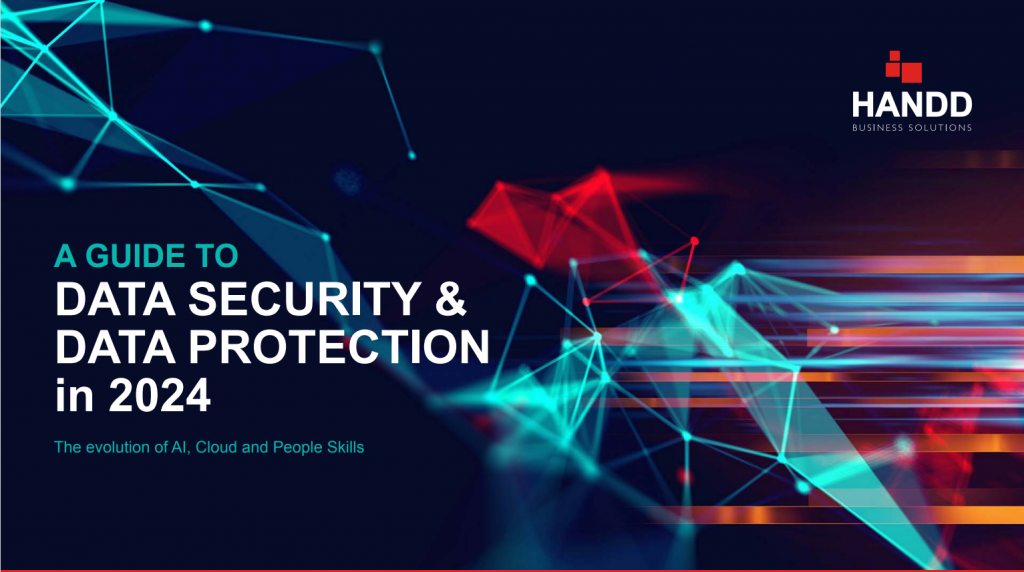Safeguarding Data Privacy in an Evolving Regulatory Environment
Posted by HANDD on 7th October 2024
Over the past half a decade or perhaps longer, privacy around data has become a focal point in data management and protection. Despite legislation having existed for years, the introduction of the General Data Protection Regulation (GDPR) in 2017 kick-started a renewed global focus on governing how organisations must keep consumer information safe to the best of their ability and granting consumers the legal right to prevent the processing of their personal data.
WHAT IS DATA PRIVACY?
Data Privacy concerns the protection of Personal Data or Personally Identifiable Information (PII). This is both from a morality perspective, with individuals keener than ever to know their data remains safe, but also from a regulatory perspective whereby legislation exists as described above to expressly grant rights to individuals around the data that companies are permitted to hold.
WHY IS DATA PRIVACY A CHALLENGE FOR BUSINESSES?
Around the world, there are now over 130 different protection and privacy laws in place across 194 countries. Despite their subtle differences, such as where data can cross borders, they all have a common mandate – to protect the privacy of those it belongs to. To do this, organisations need to understand where personal data is stored and what’s happening to it.
Lots of these regulations grant the consumer the right to request the data held on them, and to request changes or even the deletion of data and even receive proof that deletion requests have been carried out. Without a complete understanding of the data held and where it sits, this process can be almost impossible.
The regulations also mandate reporting to governing bodies and associated individuals if the rules are breached and data is lost, exposed, compromised, or stolen. In some privacy legislation, this encompasses both external and internal data loss. Therefore, even an unauthorised employee gaining access to the wrong file share could constitute a breach that needs reporting.
To know who is accessing what data, or when privacy legislation isn’t adhered to, the organisation must know what data it holds and what’s going on with that data. It must apply appropriate controls based on attributes to enable external sharing or access from home if it is to ensure the PII held is kept sufficiently secure.
WHAT IS HAPPENING NOW, AND HOW DOES IT AFFECT YOUR DATA?
As we move further into 2024, data privacy continues to be a key concern for both individuals and organisations. The landscape of data privacy is constantly evolving, driven by new technologies, increasing cyber threats, and changing regulations.
HERE’S AN OVERVIEW OF THE KEY TRENDS AND CONSIDERATIONS IN DATA PRIVACY THIS YEAR:
1. Enhanced Regulations and Compliance
Countries around the world are tightening their data protection laws. For example, the European Union’s General Data Protection Regulation (GDPR) continues to set a high standard, influencing other regions to strengthen their own laws. In the UK, the Data Protection Act 2018 aligns closely with the GDPR, emphasising accountability and transparency. Organisations must stay vigilant about compliance requirements to avoid hefty penalties and maintain customer trust.
2. Rise of Privacy Enhancing Technologies (PETs)
As threats to data security increase, so does the use of Privacy Enhancing Technologies. These tools help secure data by minimising personal data usage without losing the functionality of the data systems. Examples include techniques like data masking and encryption, which are crucial for protecting sensitive information.
3. Impact of Artificial Intelligence
AI continues to play a significant role in data privacy, both as a risk and a solution. Machine learning algorithms can potentially expose personal data or create new data privacy challenges. However, AI is also being used to enhance data privacy protection through automated data handling and the design, creation and delivery of more robust protective technology.
4. Consumer Awareness and Control
There’s a growing awareness among consumers about the importance of data privacy. More people are demanding greater control over their personal information. This shift is pushing companies to comply with legal requirements such as Data Subject Access Requests (DSAR). These are requests made by an individual to an organisation that requires the organisation to provide all of the data held on that particular individual. Greater consumer awareness is also pushing companies to provide clearer, more userfriendly privacy notices and options for data control.
5. Cyber Security Integration Data privacy and cyber security are becoming increasingly intertwined. Protecting data from unauthorised access is a key part of maintaining privacy. This integration leads to the development of comprehensive strategies that address both privacy and security aspects of data handling.
For businesses, staying ahead in the data privacy game means not only complying with these evolving regulations but also proactively adopting technologies and practices that safeguard customer data. This approach not only mitigates risks but also enhances corporate reputation and consumer trust in the brand.
HOW DO YOU MITIGATE RISK TO DATA PRIVACY?
Maintain visibility across deployments: To effectively mitigate risks related to data privacy, it’s crucial for organisations to have a clear view of their entire data lifecycle. For the successful implementation of privacy measures, comprehensive visibility across all applications and deployments – including hybrid environments, SaaS, on-premises, and even endpoint devices – is essential.
To deliver against privacy mandates, we must be capable of delivering DSARs to present, delete and prove where customer data is or isn’t, retrieve it and provide it to them in a digestible and timely manner.
Apply principles to aid discovery, classification and protection: To keep data safe and secure we must apply the following principles:
• discovery; to find where it is,
• classification; to understand what it is, and
• protection; to ensure it’s not misused or accidentally exposed.
If you have a privacy project or need specialist expertise, additional resources, or a fresh perspective, we’re here to help. Contact us at hello@handd.co.uk or request a call back to ensure your project meets all privacy requirements and exceeds expectations.
Learn more in our Guide ‘Data Security and Data Protection in 2024‘, where focus on more common projects, initiatives and areas that we feel need particular attention throughout 2024 and beyond.

























